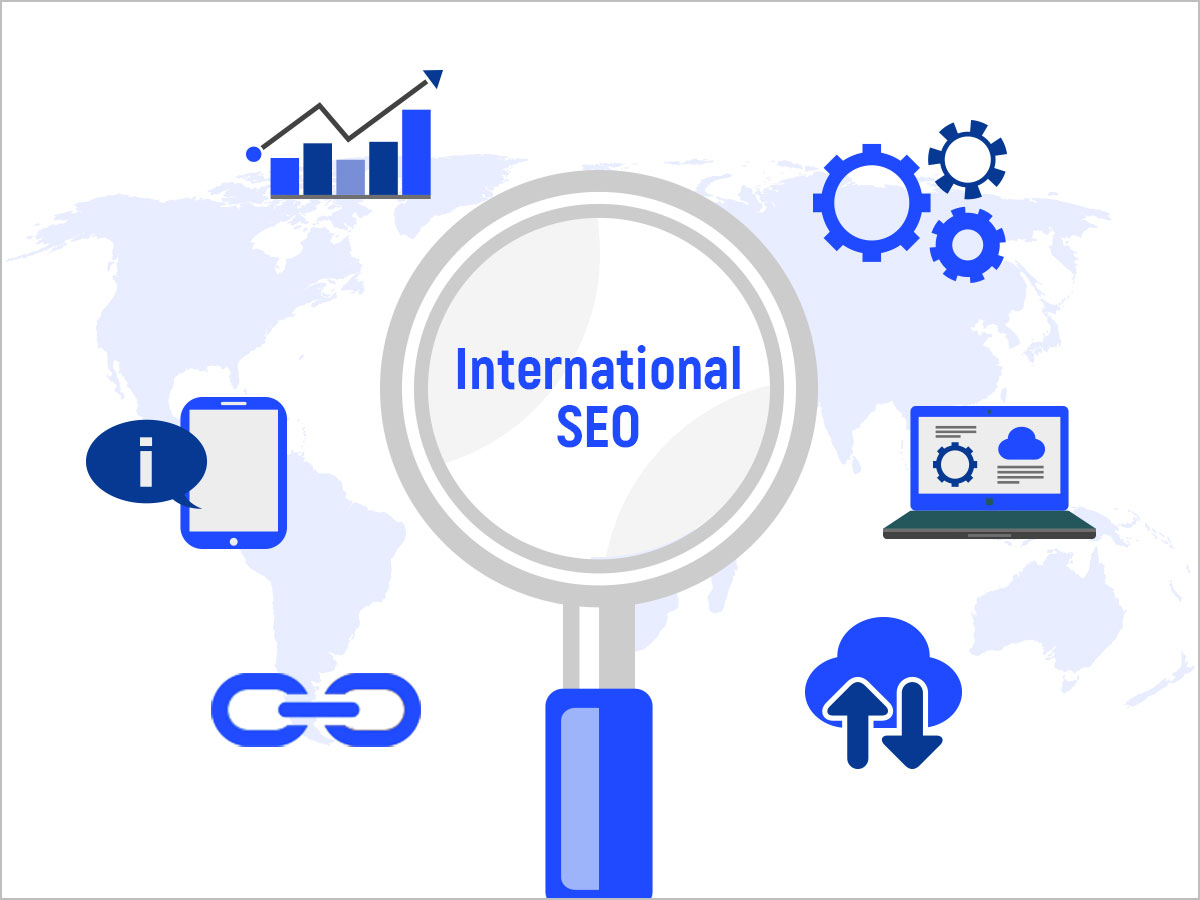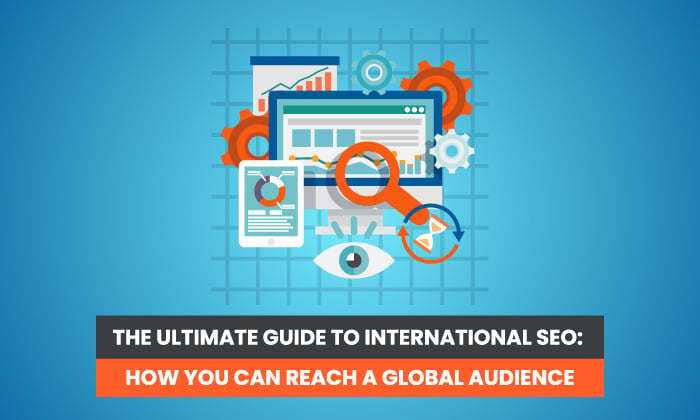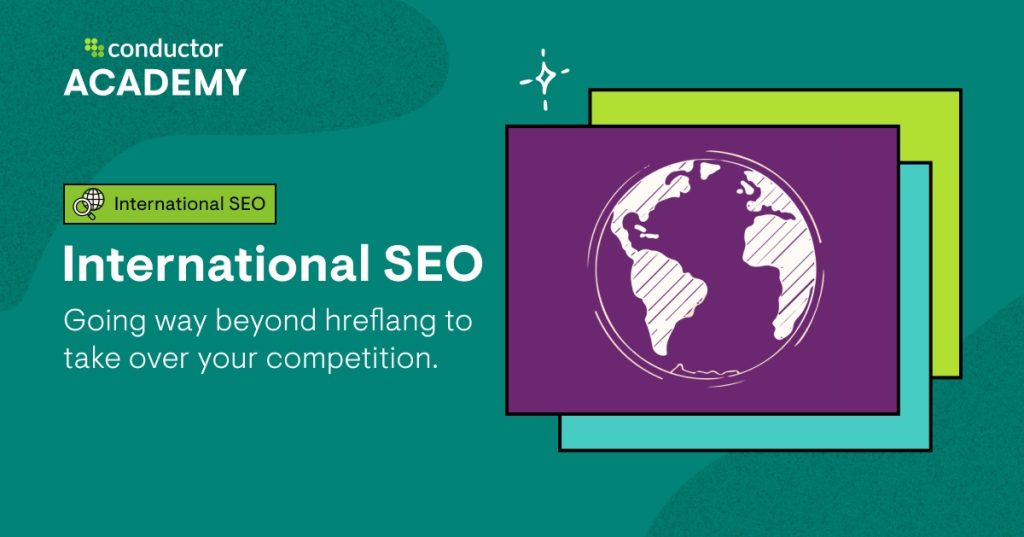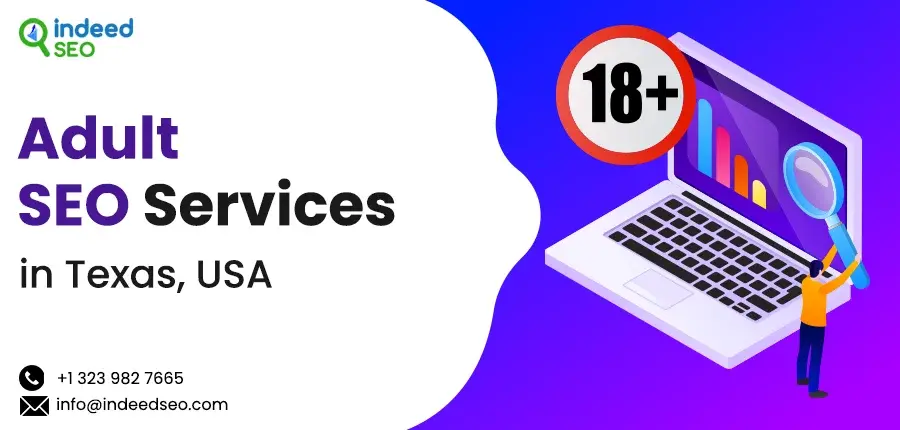To do International SEO, optimize your website for different languages and regions. Focus on localized content and keywords.
International SEO is the process of optimizing your website to reach a global audience, ensuring that search engines can easily identify which countries you are targeting and which languages you use. This strategy involves a multifaceted approach, including website structure, content localization, and technical SEO practices tailored for a worldwide market.
The goal is to create a seamless user experience for visitors from various countries, which can lead to increased traffic, engagement, and conversions. Crafting a successful international SEO strategy requires attention to detail, cultural understanding, and ongoing adjustments to align with the ever-changing global search landscape. Businesses aiming to expand their digital footprint across borders must prioritize International SEO to effectively connect with their diverse target audiences.
Introduction To International Seo
Today, let’s dive into the world of International SEO. This guide is your first step towards understanding how businesses reach customers worldwide through search engines. We’ll explore what makes global SEO unique and why it’s crucial for your online success.
The Importance Of Global Seo
Imagine your online store could sell to anyone, anywhere. That’s the power of Global SEO. It opens doors to markets beyond your local area. Here’s why it matters:
- Wider audience: Reach people from different countries.
- Better growth: Enter new markets for more sales.
- 24/7 visibility: Show up in searches day and night.
Key Differences From Domestic Seo
Global SEO isn’t just regular SEO on a bigger scale. It has its own rules. Let’s break down the main differences:
| Aspect | Domestic SEO | International SEO |
|---|---|---|
| Focus | Local markets | Multiple countries |
| Language | Usually one | Multiple languages |
| Culture | Single culture | Diverse cultures |
Understanding these differences is key to mastering International SEO. It’s not just about translation, but also about connecting with diverse cultures and search habits.
Identifying Target International Markets
International SEO starts with knowing where your audience is. A business must understand different markets. This knowledge guides a tailored SEO strategy. Explore key steps to identify your target international markets below.
Market Research Strategies
Begin with solid market research. It reveals where demand for your product is highest. Use tools to analyze market size, competition, and language. Look at economic factors too. They can affect buying power.
- Surveys: Gather consumer preferences and behaviors.
- Industry Reports: Find trends and market insights.
- Competitor Analysis: Understand who you are up against.
Analyzing Search Demand Globally
Next, analyze global search demand. See what people search for across the world.
Use keyword research tools. Look for high-volume keywords in your niche. Check regional differences in search terms.
| Region | Search Volume | Local Term |
|---|---|---|
| North America | 50,000 | sneakers |
| Europe | 30,000 | trainers |
Website Structure For International Audiences
Expanding your website to international audiences is thrilling. Yet, it’s complex too. A key part is your website’s structure. It must cater to various regions and languages efficiently. Let’s explore the best structures for global reach.
Cctlds
Country Code Top-Level Domains (ccTLDs) are two-letter domains specific to a country. Examples include .uk for the United Kingdom and .jp for Japan. They signal the site’s content is tailored for that particular country. Search engines like Google use ccTLDs to rank pages in relevant country searches. Users also trust ccTLDs, knowing the content is local.
Subdomains
Subdomains are prefixes to the main domain. They organize content by language or region. For example, us.example.com could target the United States. This structure is easier to set up than ccTLDs. It also allows for local targeting while keeping the brand consistent globally.
Subdirectories
Subdirectories, or subfolders, use the main domain with added folders. For instance, example.com/us/ could be for the United States. They are simple to manage and consolidate domain authority. Subdirectories are cost-effective as they don’t need separate hosting.
The Role Of Hreflang Tags
Hreflang tags tell search engines which language you use on a specific page. This helps to show the correct language version to users. Place hreflang tags in the head section of your HTML. They improve user experience and SEO by reducing language or country mismatches.
Content Localization And Cultural Sensitivity
Content localization and cultural sensitivity are crucial in international SEO. They ensure your content resonates with global audiences. Effective strategies require more than direct translation. They demand an understanding of cultural nuances and local customs.
Translation Vs. Transcreation
Translation changes text from one language to another. It’s important for accuracy. Yet, it might not capture local slang or expressions. That’s where transcreation steps in. Transcreation adapts content to evoke the same emotions and meanings in another culture. It considers local humor, idioms, and cultural references.
For example, a marketing slogan might be catchy in English. But it could be confusing or offensive when directly translated. Transcreation reimagines the slogan so it appeals to the new audience.
- Translation: Direct language change.
- Transcreation: Cultural and emotional adaptation.
Cultural Nuances And Local Customs
Understanding cultural nuances helps avoid missteps. It’s about knowing what is appropriate or offensive in different cultures. Local customs can influence consumer behavior. They shape how people interact with products and content.
Take colors, for example. They have different meanings across cultures. Red signifies good luck in China but can mean danger elsewhere. Your content must reflect these differences to connect with local audiences.
| Element | Consideration |
|---|---|
| Images | Respect local dress codes and symbols |
| Date formats | Adapt to local standards (e.g., DD/MM/YYYY) |
| Measurements | Use local units (e.g., kilometers vs. miles) |
Technical Seo For A Global Website
Technical SEO lays the foundation for a global website’s success. It ensures that search engines can crawl, index, and rank the site’s various international versions effectively. A focus on site speed, mobile optimization, and international link-building techniques is crucial for reaching audiences worldwide.
Site Speed And Mobile Optimization
Site speed is vital for user experience and SEO rankings. Google values fast-loading pages, especially for mobile users. Use tools like Google’s PageSpeed Insights to check your site’s performance.
- Compress images to reduce load time.
- Minimize code and use browser caching.
- Choose a reliable hosting provider.
Mobile optimization is no longer optional. With mobile-first indexing, Google uses the mobile version of your site for ranking and indexing. Ensure your site is responsive and offers a seamless experience on mobile devices.
- Use responsive web design.
- Test your site on various devices.
- Make navigation easy for touch screens.
International Link Building Techniques
Building links from international domains can boost your global site’s authority. Diverse link profiles signal relevance to a wider audience. Focus on getting links from reputable sources within your target countries.
- Guest post on relevant international blogs.
- Collaborate with influencers in target regions.
- Participate in international industry forums.
Remember to monitor your backlink profile to ensure quality and avoid penalties. Use tools like Ahrefs or SEMrush to track your international link-building efforts.
Keyword Research For Different Languages
Keyword Research for Different Languages is crucial. It helps your website reach more people worldwide. Let’s dive into how to do it right.
Multilingual Keyword Optimization
Picking the right keywords in many languages is a big deal. It makes sure people in different places can find your website. Here’s how to do it:
- Understand your audience: Know who you are talking to. Each country has different ways of searching online.
- Use local tools: Tools like Google Keyword Planner help. Choose the country and language you target.
- Check the competition: See what keywords others use. But, don’t copy. Be unique.
Avoiding Direct Translation Pitfalls
Direct translation doesn’t always work. Languages have their own rules. Here are tips to avoid mistakes:
- Get help from locals: They know the best words to use.
- Test your keywords: Use them and see if they bring people to your site.
- Keep updating: Languages change. So do the words people use to search.
| Step | Action | Reason |
|---|---|---|
| 1 | Research | Finds the best words. |
| 2 | Translate Carefully | Avoids mistakes. |
| 3 | Test | Ensures success. |
Remember, keyword research for different languages is key. It helps your site grow globally. Follow these steps to do it well.
Leveraging Social Media For International Reach
When businesses go global, social media is key. It connects with worldwide audiences. Social media strategies must adapt for international success. Let’s explore how.
Understanding Regional Platforms
Not all platforms are popular everywhere. Each region has favorites. Research is crucial. Know where your audience spends time. Some countries prefer local networks over global giants.
- China loves WeChat and Weibo.
- In Russia, it’s VKontakte (VK).
- Japan uses LINE frequently.
Customize your approach for these platforms. Engage with regional influencers. Use local trends and hashtags. This increases visibility and connects with local users.
Creating Globally Engaging Content
Global content must resonate with diverse audiences. Start with universal themes. Sports, music, and holidays often cross borders. Use visuals. Pictures and videos speak volumes.
Remember to localize. Translate accurately. Respect cultural nuances. Celebrate international events. Include subtitles or captions for videos.
| Content Type | Global Appeal | Localization Needed |
|---|---|---|
| Visuals | High | Low |
| Videos | High | High |
| Text | Varies | High |
Test different content formats. Keep track of what works. Use analytics tools. Adjust strategies based on data. Always be authentic. Authenticity builds trust and loyalty.
Monitoring And Measuring International Seo Success
Monitoring and Measuring International SEO Success is crucial in understanding the impact of your global digital marketing efforts. It involves tracking the performance of your website across different countries and languages. By doing so, you ensure that your international audience finds and engages with your content effectively. Let’s delve into the core aspects of this process.
Key Performance Indicators (kpis)
Identifying the right KPIs is essential for any SEO strategy. They help you measure success and guide your decisions. For International SEO, consider these KPIs:
- Organic Traffic: Number of visitors from search engines.
- Bounce Rate: Visitors leaving quickly indicates content relevance issues.
- Conversion Rate: Measures the percentage of visitors who take a desired action.
- Keyword Rankings: Positions of your targeted keywords in search results.
- Click-Through Rate (CTR): The frequency of clicks after an impression.
Adapting Strategy Based On Analytics
Analytics provide insights into your website’s performance. Use these insights to adapt and refine your strategy. Look for patterns in the data:
| Analytics Metric | Action |
|---|---|
| High Bounce Rate | Improve content relevance and engagement. |
| Low CTR | Optimize meta titles and descriptions for better appeal. |
| Poor Keyword Performance | Conduct more keyword research and update content accordingly. |
| Low Conversion Rate | Enhance user experience and clear calls-to-action. |
Regularly review your KPIs and analytics data. Make necessary adjustments to stay on top of international markets.
Legal Considerations And Compliance
Legal Considerations and Compliance play a crucial role in International SEO. Businesses must understand and adhere to legal requirements in different countries. This ensures smooth operation and avoids costly penalties.
Understanding Gdpr And Other Regulations
The General Data Protection Regulation (GDPR) protects EU citizens’ data. Non-compliance leads to hefty fines. It applies to any business processing EU residents’ personal data.
- Consent must be clear and withdrawable.
- Data collection should be for legitimate purposes.
- Users have the right to access and delete their data.
Other regulations include California Consumer Privacy Act (CCPA) and Brazil’s LGPD. Each has specific requirements. A table comparing them helps understand differences.
| Regulation | Region | Key Requirements |
|---|---|---|
| GDPR | EU | Consent, Data Rights, Penalties |
| CCPA | California, USA | Disclosure, Data Sales Opt-Out |
| LGPD | Brazil | Consent, Data Protection Officer |
Navigating International Seo Legalities
SEO strategies must align with legal frameworks. Here’s how:
- Research local laws for each target market.
- Adapt privacy policies to local regulations.
- Implement required changes on websites promptly.
Privacy Policy pages need clear language. They should outline data use and user rights.
Cookie Consent banners are essential. They comply with GDPR and similar laws.
Local legal advice is invaluable. Experts guide through complex SEO landscapes.

Credit: fatjoe.com
Case Studies: Successful International Seo Campaigns
Let’s dive into Case Studies: Successful International SEO Campaigns. We’ll see how different companies won big. Their strategies and lessons can guide us.
Industry-specific Strategies
Different industries require unique SEO tactics. Here are some examples:
- E-commerce: A fashion brand used local trends to rank higher.
- Tech: A software company optimized its website for local languages.
- Travel: A tourism operator used local influencers to boost visibility.
These strategies helped companies stand out in crowded markets.
Lessons Learned And Best Practices
From these case studies, important lessons emerged. Here are key takeaways:
- Research is crucial. Understand local markets deeply.
- Customize for the locale. Use local languages and trends.
- Use local platforms. Some countries prefer different social media.
- Monitor and adapt. SEO landscapes change. Stay flexible.
Adopting these practices can lead to success in international SEO.
Future Of International Seo
The digital landscape evolves swiftly. International SEO strategies must adapt to stay relevant. Global markets are diverse. Brands must address various languages and cultural nuances. Future trends and technologies will shape International SEO practices.
Emerging Trends In Global Seo
New technologies and user behaviors drive SEO evolution. Voice search gains momentum. Visual search technologies advance. AI and machine learning refine algorithms. User experience (UX) becomes paramount. Mobile-first indexing dictates design choices. Localized content and cultural sensitivity are key. Multilingual SEO strategies must align with local search engine preferences.
- Voice Search Optimization: Smart speakers change search queries.
- Visual Search Capabilities: Image recognition software enhances search options.
- AI & Machine Learning: Algorithms get smarter, personalizing user experiences.
- Enhanced UX: Seamless, fast-loading, mobile-friendly sites win.
Staying Ahead In A Competitive Market
Competition in digital spaces is fierce. Success requires agility and foresight. Businesses must monitor SEO trends. They should invest in ongoing education and tools. Testing and adapting to market changes is crucial. Data analysis guides strategy adjustments. Content must stay fresh and relevant. Links should be high-quality and region-specific. Brands that anticipate and adapt will thrive.
- Monitor Trends & Tools: Stay informed about global SEO changes.
- Invest in Learning: Understand new SEO strategies and technologies.
- Analyze Data: Make informed decisions based on metrics.
- Adapt Content & Links: Keep content updated and links relevant.

Credit: www.skynetindia.info

Credit: neilpatel.com
Frequently Asked Questions
How Do I Create An International Seo?
To create international SEO, select a URL structure that’s geo-targeted. Use hreflang tags for language targeting. Research local keywords and optimize content accordingly. Ensure site speed is fast globally. Cultivate local backlinks and social signals.
What Is An Example Of International Seo?
An example of international SEO is optimizing a website for different languages and countries to improve its visibility in global search results. This involves using hreflang tags and creating country-specific content.
How Much Does International Seo Cost?
International SEO costs vary widely, typically ranging from $1,500 to $10,000 per month, depending on the scope and complexity of the project.
How Do I Target Different Countries In Seo?
To target different countries in SEO, use hreflang tags for language and region targeting, host local versions of your site on country-specific domains, create localized content, engage in local link building, and ensure your website is fast and accessible worldwide.
Conclusion
Mastering international SEO is key to expanding your global reach online. By tailoring your strategy to different regions, you’ll connect with more audiences. Remember, success lies in understanding cultural nuances and search engine preferences. Start small, focus on quality content, and adapt based on analytics.
With persistence, your brand can thrive worldwide.


